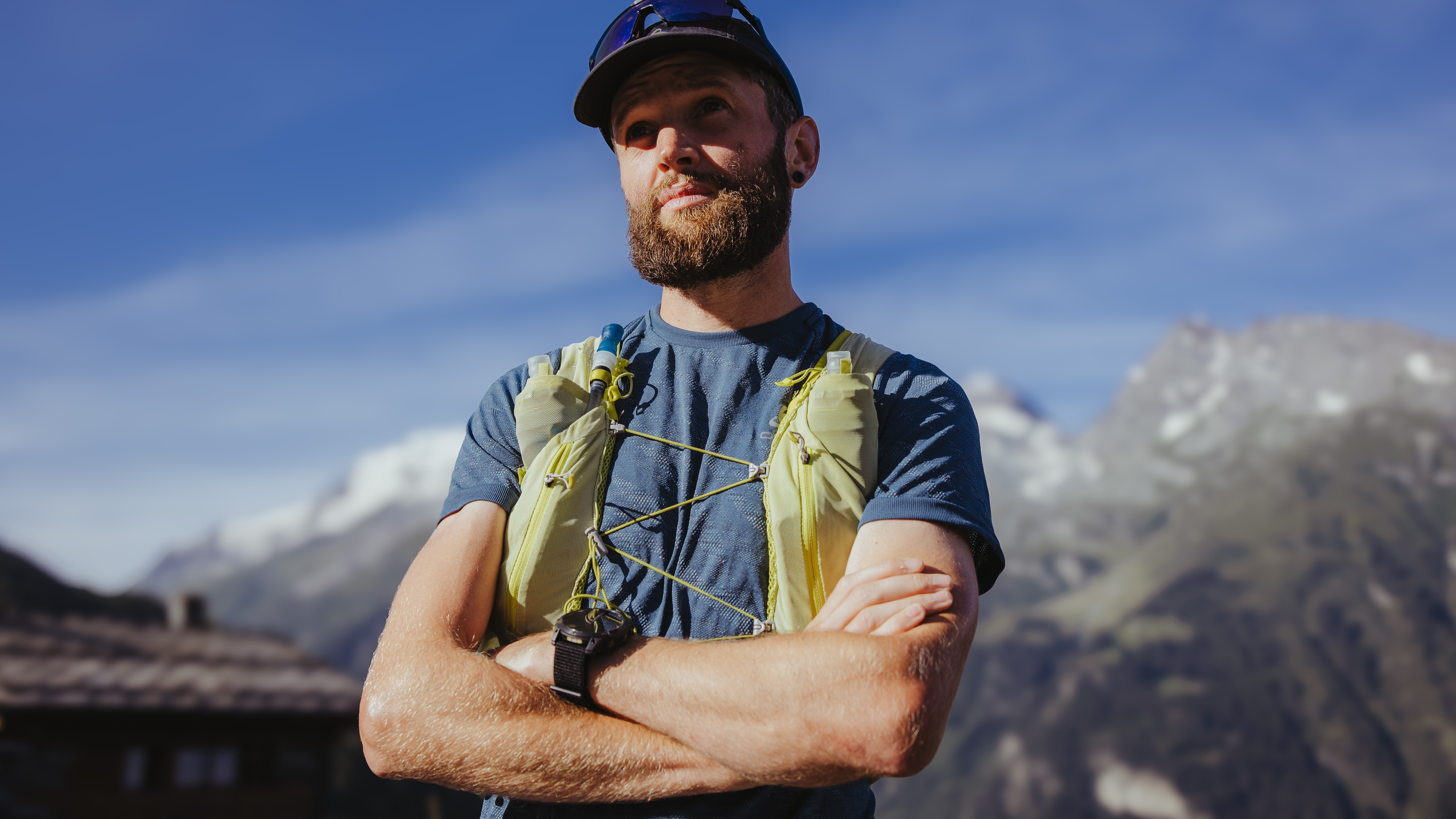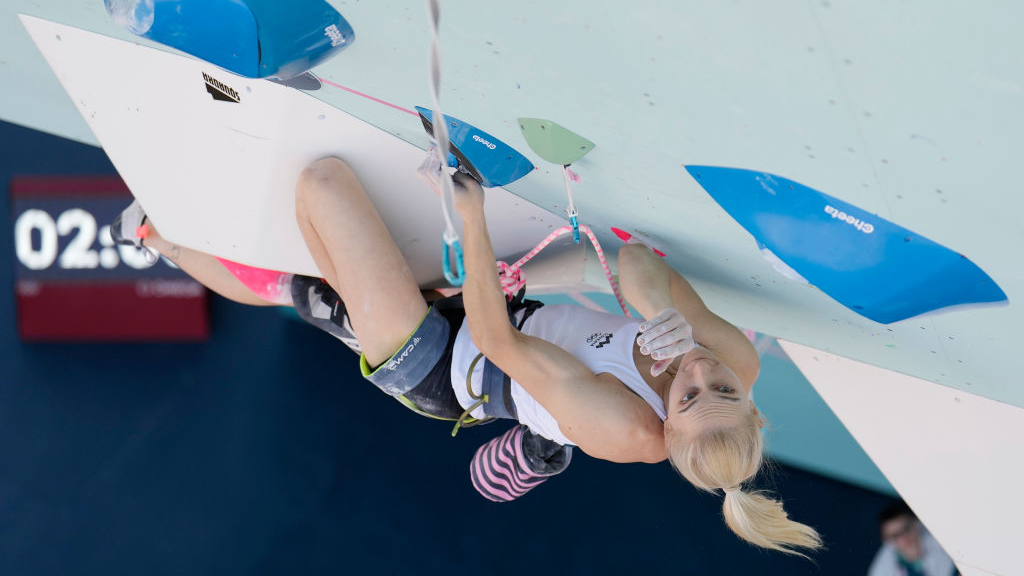“This watch saved me 40 to 50 minutes a day on the trail” – 3 reasons this ultra runner swears by the Garmin Enduro 2
Jake Catterall set the record for his recent run across the Alps, and he’s got his Garmin watch to thank for it

Setting a new ultra running record rarely happens without some help. There are months of training, planning and trialing different trail running shoes to find the perfect pair for the big event. You need a support crew to help you coordinate gear, meals and sleep. And these days, success usually involves a Garmin watch.
I recently spoke to British ultra runner Jake Catterall following his record-setting run across the Alps. If you haven’t already heard, over 35 days this summer, Catterall became the first to run the new Via Alpina red route from Italy to Monaco via Slovenia, Austria, Germany, Switzerland and France. He ran around 37 miles each day to complete over 1,200 miles but it’s the elevation gain that’s the most staggering part of his feat – in just over a month, he ran the equivalent of 12-and-a-half Everests from sea level to summit.
I’ll be writing more about how Catterall conquered the route soon (and trust me, you’re going to want to read about how many hours he spent on the Stairmaster and how many Cokes he drank) but naturally, one of my first questions for the runner was, what Garmin watch did you use?
Catterall went with the Enduro 2, describing it as “incredible,” which may be no surprise to you if you’re an avid trail runner fond of the longer distances yourself. The model boasts all of Garmin's most advanced training tools, with incredibly long battery life for off-grid adventures and we gave it nearly perfect marks in our review.

The Enduro 2 also one of the brand's most expensive watches, so it’s understandable if you’ve been holding off on pulling the trigger, but if you’re looking for a reason to buy one, Catterall has three:
1. It’s got plenty of juice
When you’re setting records, whether that’s a sprint across one of the world’s greatest mountain ranges or just trying to set a PB, you want proof. That’s why there’s nothing more dispiriting than your running watch dying on you, which can easily happen when you’re using it in GPS mode during long days on the trail. But with the Enduro 2’s solar-powered face and exceptional battery life, that was no issue for Catterall.
“I was doing 12-hour activities and what was crazy is that on the sunny days I would only use 25 percent of the watch battery even after really heavy mapping days and that’s barely anything. My old watch would just die with me turning it on.”
Advnture Newsletter
All the latest inspiration, tips and guides to help you plan your next Advnture!
And on non-sunny days? Then Catterall says he’d expect to lose about 40 percent of his juice. Now, he had two crew members and a van where he could recharge overnight, so battery life wasn’t such an issue, but if you’re planning on a multi-day adventure without such support, make sure you bring your portable charger too.

2. It can help you run more efficiently
Look, we all know that a GPS watch can be a great training tool, but it can’t actually make you run faster. Or can it?
To navigate his way across the Alps, Catterall relied on GPX maps downloaded to his watch. When he reached trail junctions along the way, he’d encounter other runners at a standstill, checking the signposts, scrutinizing the map and double-checking information on their phones.
“I would say that some of these hikers would spend maybe five or ten minutes at each post before making the decision to run on.”
If I'm being honest, I was running in the Alps at the same time and I might have been one of these runners. Catterall meanwhile would run up to the sign without slowing down, his watch would tell him which way to go and he’d keep running.
“I think I would’ve saved maybe a total of 40 to 50 minutes of decision-making per day just with having this GPX.”
That’s an amount of time Catterall knows he’d never be able to gain simply through training, and it’s a strong mark for the Enduro 2 for anyone who’s going for podiums, wants to increase efficiency or set records.

3. It could save your life
One of the key features of the Enduro 2 that isn’t available on all of their models is that it has an extremely bright flashlight – something Catterall admits he thought was a bit gimmicky at first. After all, you’d usually hit the trail with a running headlamp and we all have a flashlight on our phones these days. But when his crew’s carefully laid plans went awry, he realized the benefits of the light.
In order to keep his running backpack as light as possible, Catterall set off each morning with what he needed for the day and later meet his crew and switch it out for his night gear as needed. One day, however, a road closure meant his crew couldn’t meet him on the trail, and he ended up having to run beyond sunset without his night kit or food.
“I was on the trail until 10 p.m. and it got super dark and my phone just was not cutting it at all.”
Remembering the light on his watch, he switched it on and discovered it was powerful enough for him to keep moving confidently.
“I was actually running with my watch in my hand like a sort of wand and then I had the map also on because it was super dark, so I literally was just running blind and the GPX map and the light on my watch was just guiding my way through the trail.”
Is the Garmin Enduro 2 worth it?
With a list price of over $1,000, you should definitely think twice about making this purchase. However, if you’re looking to go the distance and you want to be more efficient on the trail – and add another safety device to your toolkit – it might just be what you need to go that extra mile.
Julia Clarke is a staff writer for Advnture.com and the author of the book Restorative Yoga for Beginners. She loves to explore mountains on foot, bike, skis and belay and then recover on the the yoga mat. Julia graduated with a degree in journalism in 2004 and spent eight years working as a radio presenter in Kansas City, Vermont, Boston and New York City before discovering the joys of the Rocky Mountains. She then detoured west to Colorado and enjoyed 11 years teaching yoga in Vail before returning to her hometown of Glasgow, Scotland in 2020 to focus on family and writing.

